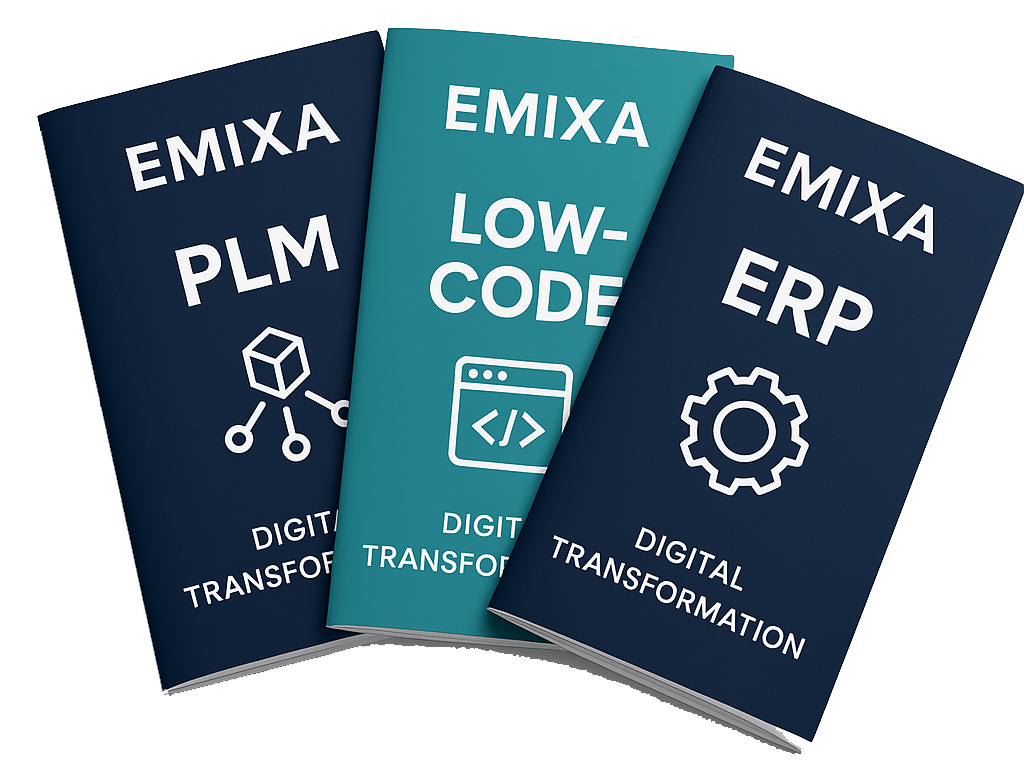
- Integration
- Applications
- Lean Manufacturing
What is Total Cost of Ownership (TCO)?
.png?width=864&height=486&name=TCO%20(1).png)
In the manufacturing industry, investment decisions have traditionally focused on direct costs: purchase prices, production costs, and lead times. While these metrics remain important, they only tell part of the story. True competitiveness in today’s digital and globalized economy requires a broader perspective. This is where Total Cost of Ownership (TCO) can create insight. As the world, machinery and manufacturing practices become increasing connected and digitalized it is essential to revisit and expand this concept.
While TCO is not a new concept digital transformation reshapes how manufacturers view and manage TCO. The introduction of advanced systems and data-driven approaches creates opportunities for both cost reduction and value creation. It offers the complete picture of costs and earned value throughout the entire lifecycle of a product, solution or service. This process starts from concept and design to production, operations and after-sales support. For IT and business managers in manufacturing, TCO has become a key performance indicator for making better investment decisions, reducing risks, facilitating innovation and driving sustainable value creation.
As digitalisation reaches the shopfloor and the potential of Industry 4.0 continues to unfold, the concept of a Digital Thread is becoming more and more relevant. The Digital Thread is a digital backbone that seamlessly connects data across the product lifecycle. From PLM, ERP to Manufacturing Execution Systems, and advanced analytics platforms. By establishing this continues flow manufacturers can reduce errors, eliminates duplicate data entry, ensure full traceability and enable data-driven decision making.
The definition of Total Cost of Ownership (TCO)
According to Gartner, Total Cost of Ownership (TCO) is a financial estimate that helps companies determine the direct and indirect costs of a product or system. Rather than simply looking at the initial purchase or license costs, TCO takes into account every cost incurred during the full lifecycle. This includes procurement (hardware and software), implementation, training, operations, support, downtime and other productivity losses, and even decommissioning.
In short TCO provides organizations with financial insight that goes beyond acquisition price. It helps leaders avoid hidden costs, improve budgeting accuracy, and evaluate long-term return on investment.
What costs are included in TCO?
TCO is a concept that covers multiple cost categories and is different for every company. For manufacturing Emixa includes the following categories:
 By mapping all these categories, organizations gain a more realistic understanding of the true cost and value of their investments.
By mapping all these categories, organizations gain a more realistic understanding of the true cost and value of their investments.
Why is insight into TCO crucial?
Making business decisions based on acquisition price alone is risky, as you are only making decisions without seeing the full picture. A solution that appears inexpensive upfront may, over time, generate significantly higher operational or maintenance costs. In an industry where margins are under pressure, competition is fierce, and customer expectations continue to rise, organizations need a broader perspective. TCO provides that foundation by offering insight for cost optimization, risk management, and sustainable decision-making.
TCO can help organizations navigate important questions and cost uncertainty such as:
- Integration challenges and system connectivity.
- The unexpected impact of downtime caused by poor support or compatibility.
- Limitations in scalability.
- Missed opportunities for optimization and innovation.
The relevance of TCO becomes especially clear when looking at real-world situations. One customer in the food-and-beverage industry had been running its entire shop floor on a self-built Access-database. While this solution worked for a time, it caused frequent production stops and carried significant risk, as only one person was able to manage the system. Whenever this individual was on vacation and eventually retired the factory faced serious operational problems. This example illustrates how fragile and costly hidden dependencies can become if they are not addressed or ignored with a sustainable digital strategy.
Another example shows how TCO is not only about preventing risks, but also about driving innovation. A manufacturing customer realized that instead of offering only standard products, they could expand their business by providing make-to-order solutions as an additional service. This required rethinking their value chain, machines and surrounding software landscape. Creating a framework to ensure scalability across multiple factories worldwide. By embedding TCO thinking into this journey, Emixa supported this customer in qualifying both the machinery and the supporting digital systems. Helping the customer to create a new business model while ensuring long-term operational efficiency.
How do you calculate TCO effectively?
At Emixa we can help calculate the TCO with a structured, step-by-step approach:
- Define scope: specify the product, system, or investment being analysed.
- Identify cost categories: include acquisition, implementation, operational, maintenance, and end-of-life costs.
- Collect data: gather financial records, vendor contracts, service agreements, and risk assessments.
- Quantify indirect costs: include training, downtime, compliance risks, and efficiency losses.
- Analyse over lifecycle: spread costs over the full lifecycle (often 3–10 years).
- Compare scenarios: use TCO as a benchmark for comparing solutions, such as on-premise vs. cloud-based MES.
To determine the TCO Emixa uses proven models such as Digital Maturity Scan, Emixa’s proven FAST method, and specialized analytic solutions.
The benefits of working with TCO
Understanding the full cost structure provides organizations with a range of advantages. It enables them to make better investment decisions by evaluating solutions not only on purchase price but on their long-term value. With greater control and insight over recurring and hidden expenses, companies can anticipate costs more accurately and avoid unpleasant surprises. For example poor integration, high maintenance fees, or unexpected downtime. At the same time, TCO helps reduce risks by highlighting potential compliance, security, and operational issues at an early stage. Finally, by embedding TCO into digital transformation initiatives, organizations can strengthen their Digital Thread and make more data-driven decisions that generate even greater value.
Hidden costs often arise from siloed systems and manual data transfers. Integrating ERP, PLM, and MES enables manufacturers to create smoother information flows, resulting in fewer delays, better forecasting, and higher product quality. While this may sound straightforward, every organization faces unique challenges. By identifying digital gaps between systems, processes, and ways of working, Emixa helps design tailored solutions that strengthen the digital landscape. Low-code platforms such as Mendix or integration platforms like Boomi can then be leveraged to accelerate innovation and unlock additional value.
While many technology partners tend to be problem- and solution-oriented, Emixa takes a different approach. Instead of asking only “what is your issue right now?”, we focus on the bigger picture: What are your strategic goals? What do you need to achieve them? Which challenges stand in the way, and how can we help overcome them?
By looking ahead and applying our S-BOS model (covering Strategy, Business, Operations, and Systems) we create clarity on the real value of point solutions and challenges. This allows us to help our customers shape a coherent roadmap that is fully aligned with the organization’s long-term strategy.
When should you use TCO?
Historically, TCO was always looking at the past and asking the following questions: “how can we reduce costs based on the past and current data?” Today, analytics can help us look into the future and help guide future decisions. Think of: predictive maintenance, AI analysis and digital twins of machines or systems. By embracing these concepts manufacturers turn TCO into a strategic growth lever.
TCO is relevant in many modern decision-making scenarios in manufacturing such as:
- Cloud vs. on-premise: comparing long-term costs of hosting ERP or MES systems.
- Hardware investments: evaluating lifecycle costs of new machines or robotics.
- Integration projects: assessing the value of connecting ERP, PLM, and MES into a unified digital thread.
- SaaS migration: weighing subscription vs. ownership costs when adopting SaaS platforms.
While many companies already have the right tools in place, true value is often lost when strategy, processes, and technology are not fully aligned. Emixa Management consulting helps bridge this gap by assisting in defining a clear digital strategy and a practical roadmap for (digital) transformation. This alignment ensures that digital initiatives are not isolated projects, but integrated efforts that deliver measurable improvements in TCO.
The TCO provides manufacturers with the insight needed to make the right decisions and to establish a strong Digital Thread. Emixa supports organizations by setting up, guiding, and creating transparency around TCO, ensuring that both hidden costs and long-term value are fully visible. With our expertise in digital transformation, we help customers embed TCO into their digitalization journeys. By doing so we ensure that every investment contributes to a future-proof digital enterprise.
Conclusion
Managing the Total Cost of Ownership in manufacturing is no longer just about cutting costs, but about enabling and embracing digital transformation. The true value lies in creating a Digital Thread by integrating ERP, PLM, MES, and other core and supporting systems to gain a complete view of TCO. With this foundation, data-driven decision making can be leveraged to reduce costs, increase agility, and build long-term competitive advantage. Emixa supports this journey with proven tools and expertise.
The Emixa Digital Maturity Assessment helps organizations identify digital gaps and define a clear roadmap for insight and (digital) transformation. In addition, Emixa brings in-depth knowledge of core enterprise systems, combined with low-code platforms such as Mendix to accelerate innovation and integration solutions like Boomi to connect digital ecosystems. Together, these elements ensure that every investment delivers measurable and lasting value.

Peter Zonneveld, Senior Managing Consultant
Author: Peter Zonneveld
Published date: September 19, 2025

Explore our Technology. Access our downloads center.
Access NowStart your Digital Transformation with Emixa

We help businesses transform their digital future with cutting-edge technology and strategic products & services


